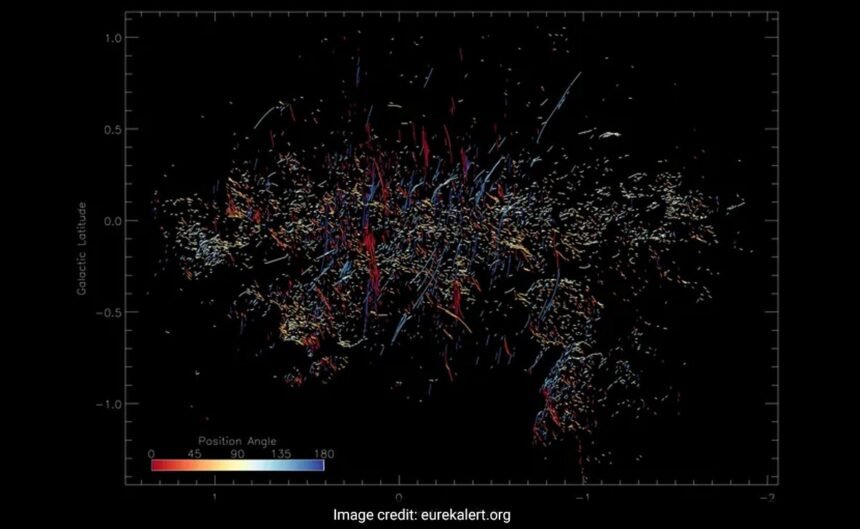Scientists, using the South African Radio Astronomy Observatory’s MeerKAT radio telescope, have made a groundbreaking discovery in the center of the Milky Way galaxy. They have identified hundreds of enigmatic structures known as “cosmic threads” that lead directly to the supermassive black hole at the galaxy’s core. The findings, published in The Astrophysical Journal Letters, reveal that each filament stretches over five to 10 light years, resembling Morse code patterns on a grand scale.
The lead author of the study, Farhad Yusef-Zadeh, an astronomer at Northwestern University, expressed his astonishment at the discovery. He stated that these structures, which emit luminous gas, all trace back to the supermassive black hole, providing valuable insights into its activity. The observations were made possible by the MeerKAT radio telescope, renowned for its exceptional sensitivity, during a record-breaking 200-hour survey of the galactic core.
Yusef-Zadeh, who had previously discovered another population of similar filaments almost four decades ago, described the MeerKAT observations as a game-changer and a remarkable technical achievement in the field of radio astronomy. This new revelation regarding the black hole, positioned approximately 26,000 light-years away from Earth, has generated considerable excitement among experts in the field.
The vertical filaments, perpendicular to the galactic plane, surround the nucleus of the Milky Way, while the horizontal ones, parallel to the plane, extend radially towards the black hole. The structures, located 2,500 light-years away from Earth, exhibit a stunning beauty that underscores the elegance of the universe, as stated by Erika Hamden, an assistant professor of astronomy at the University of Arizona, who was not involved in the study.
This remarkable scientific breakthrough not only sheds light on the intricate workings of the supermassive black hole at the heart of our galaxy but also emphasizes the significance of the MeerKAT radio telescope in advancing our understanding of the cosmos. The discovery of these cosmic threads represents a significant milestone in unraveling the mysteries of the Milky Way and opens up new avenues for future research and exploration.






